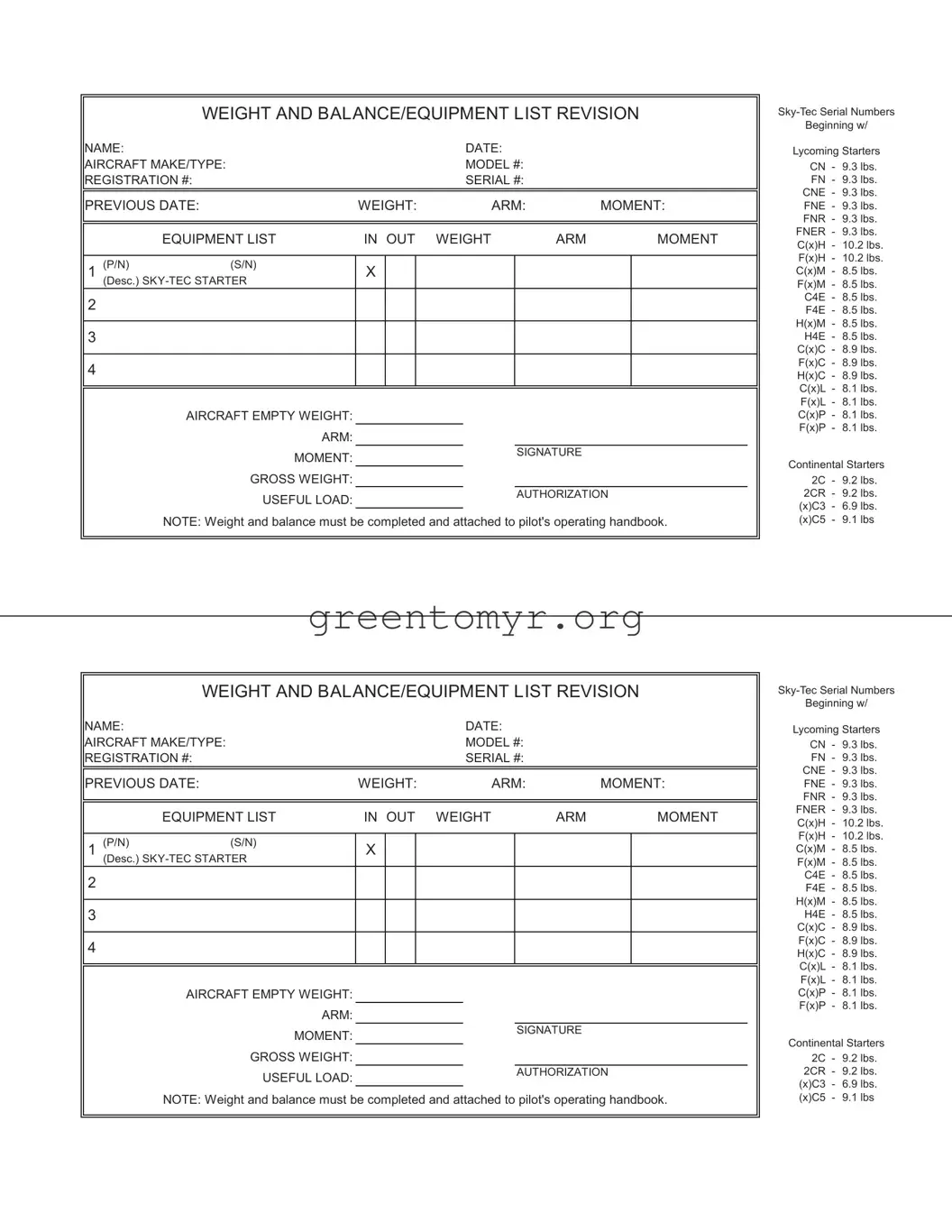Accurately completing the Aircraft Weight Balance form is crucial for ensuring safety during flight operations. However, many individuals make common mistakes that can lead to inaccuracies. Awareness of these pitfalls can enhance the reliability of the form.
One frequent error is failing to update the revision name and date. These details are essential for tracking changes over time. An outdated form can mislead pilots regarding the current aircraft status, possibly putting safety at risk.
Another mistake involves neglecting to fill in the aircraft make/type and model number. Each aircraft has specific weight and balance requirements that vary from one model to another. Without this information, it's challenging to ascertain whether the load is properly balanced.
Incorrectly recording the empty weight, arm, and moment is a critical oversight. These figures serve as the foundation for all subsequent calculations. Even a small discrepancy can have significant consequences, potentially making the aircraft unsafe for flight.
Many also overlook the importance of including equipment lists with accurate weight, arm, and moment measurements. Each item added or removed from the aircraft contributes to its overall weight and balance. Forgetting to list equipment can distort the results, leading to a miscalculated safe operating weight.
Signatures on the form should not be ignored. The section for signature must be completed to validate the accuracy of the information submitted. A missing signature can render the form unofficial, leading to potential legal and safety complications.
Inaccurate serial numbers, particularly of key components like starters, is another common problem. Each part has specific weight attributes and should be correctly documented to ensure safe weight calculations. Mistakes in this area can lead to a misunderstanding of the aircraft's weight profile.
Finally, individuals sometimes forget to attach the completed form to the pilot's operating handbook. The failure to do so can prevent pilots from accessing critical information before takeoff, thereby compromising safety. Keeping the form attached ensures that all necessary documentation is readily available for review.

